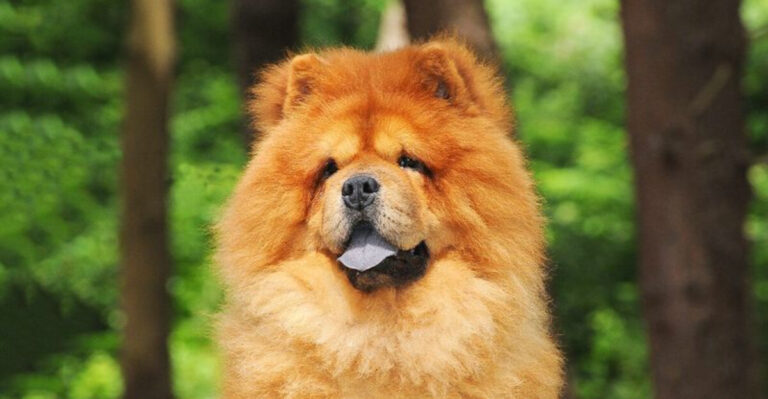Everything You Need To Know About Raising A Doberman Puppy Like A Pro

Bringing home a Doberman puppy changes your life in the most wonderful ways. These intelligent, loyal companions need specific care to grow into the confident, well-behaved adults they’re meant to be.
Whether you’re a first-time dog owner or adding to your pack, understanding the unique needs of this powerful breed sets you both up for success.
Let’s explore what makes raising a Doberman both challenging and incredibly rewarding.
1. Early Socialization Makes All The Difference
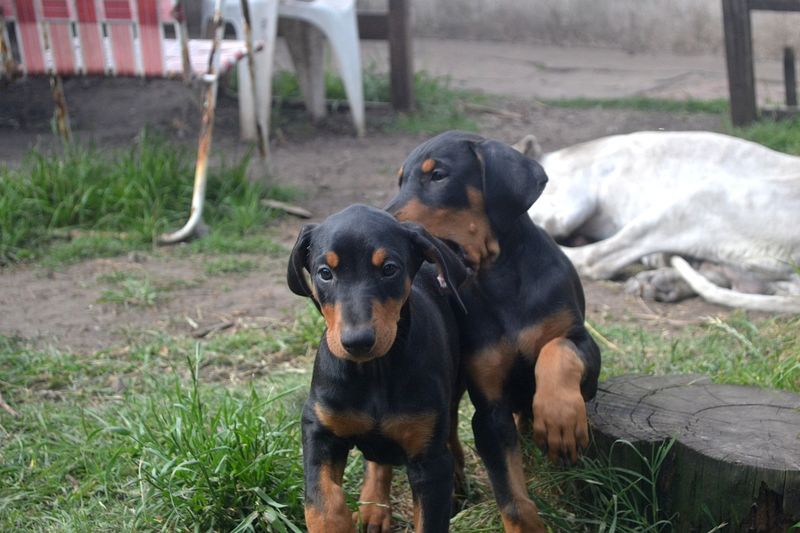
Dobermans have a natural protective instinct that needs proper channeling from puppyhood. Between 8-16 weeks, your pup’s brain is like a sponge – ready to soak up experiences that shape their adult personality.
Introduce your Doberman puppy to different people, animals, surfaces, and environments during this critical window. Positive experiences now prevent fear-based aggression later.
Create a socialization checklist including children, men with beards, people in uniforms, other dogs, and busy streets. Each positive encounter builds confidence and creates a well-adjusted adult dog who can distinguish between normal situations and actual threats.
2. Smart Training Approaches For A Brilliant Breed

Dobermans rank among the top 5 most intelligent dog breeds, which means they get bored with repetitive training. Keep sessions short (5-10 minutes) but frequent, focusing on consistency rather than length.
Use positive reinforcement – treats, praise, and play work wonders. Harsh methods backfire with this sensitive breed, creating fear instead of respect. Remember that your Doberman wants to please you!
Mental challenges are just as important as physical exercise. Puzzle toys, scent games, and learning new commands keep their sharp minds engaged. A mentally stimulated Doberman is less likely to develop destructive behaviors born from boredom.
3. Nutrition Foundations For Healthy Growth
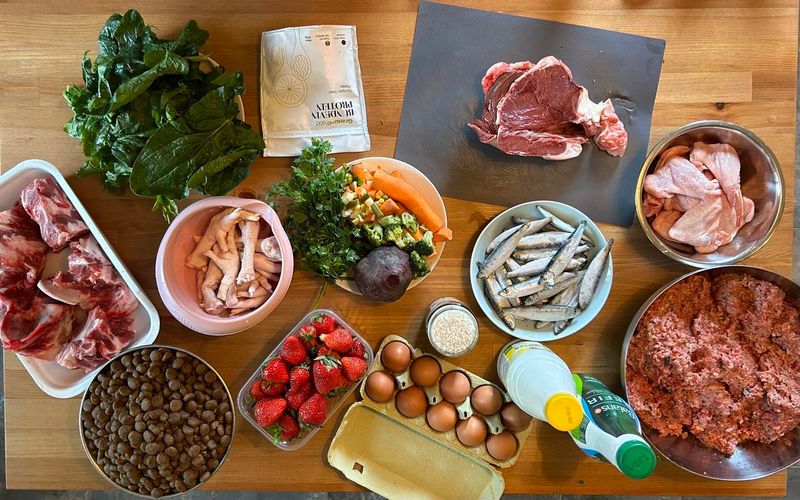
Growing Dobermans need carefully balanced nutrition to support their rapid development without causing joint problems. Look for large-breed puppy formulas specifically designed to control growth rate while providing necessary nutrients.
Protein content matters – aim for quality sources (chicken, beef, fish) listed first on ingredient labels. Avoid overfeeding, which can lead to too-rapid growth and potential orthopedic issues.
Feed smaller meals 3-4 times daily until 6 months, then transition to twice daily. Slow feeders prevent gulping and reduce bloat risk, a serious condition in deep-chested breeds. Always have fresh water available, especially after exercise when these athletic puppies need proper hydration.
4. Exercise Requirements Without Overdoing It
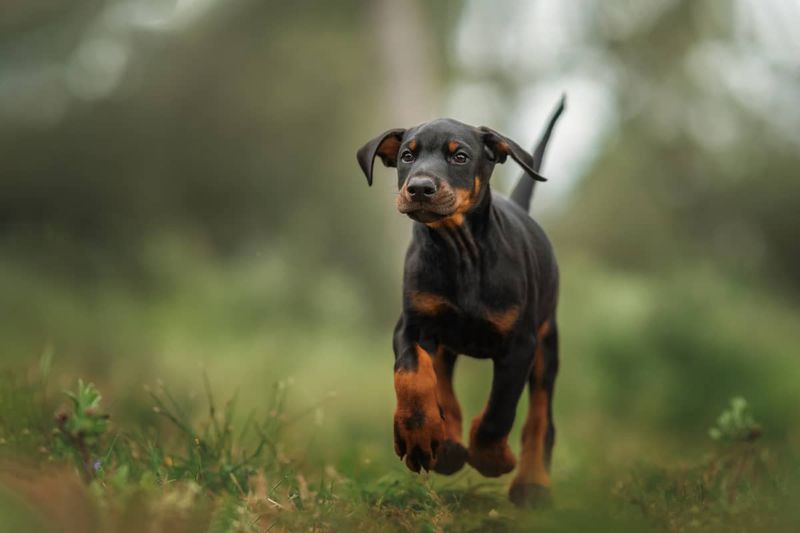
Young Dobermans have boundless energy but developing joints that need protection. Until your puppy reaches 12-18 months, avoid high-impact activities like jumping, long runs on hard surfaces, or steep stairs.
Structured play in 15-20 minute sessions several times daily works perfectly. Swimming offers excellent low-impact exercise once your pup is comfortable in water. Gentle tug games and supervised off-leash exploration in safe areas allow natural movement patterns.
Mental exercise counts too! Training sessions, food puzzles, and scent games tire out that busy brain. Remember the tired puppy formula: a physically exercised Doberman plus mental stimulation equals a well-behaved companion who’s ready to relax when you are.
5. Crate Training For Security And Safety

Contrary to what some think, a properly introduced crate becomes your Doberman’s safe haven – not a prison. Start with positive associations: treats, meals, and special toys only appear inside the crate.
Gradually increase crate time, beginning with just minutes while you’re present. Never use the crate for punishment, which creates negative associations. A properly crate-trained Doberman feels secure in their den-like space.
Beyond providing security, crates prevent destructive behaviors when you can’t supervise. They’re invaluable for housetraining since puppies naturally avoid soiling their sleeping area. Select a crate large enough for your adult Doberman to stand, turn around, and lie down comfortably – with dividers for adjusting size during growth.
6. Health Screening Priorities For Prevention
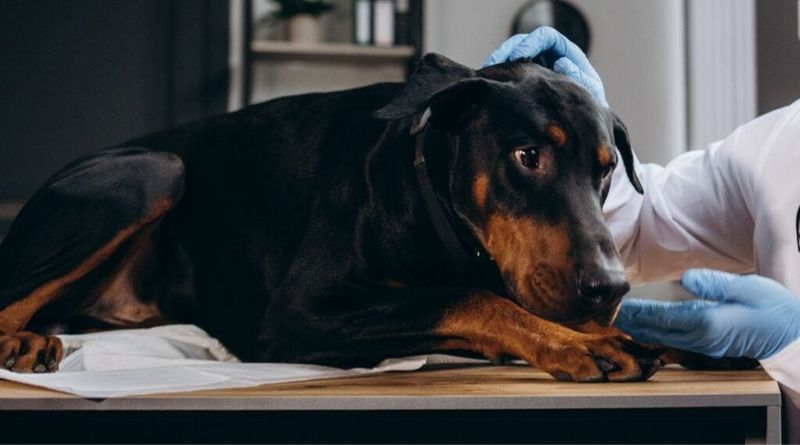
Dobermans face specific health challenges worth understanding from day one. Dilated cardiomyopathy (DCM), von Willebrand’s disease, hip dysplasia, and wobbler syndrome appear more frequently in this breed than others.
Establish a relationship with a vet experienced with large working breeds. Schedule regular checkups every 3-4 months during the first year. Ask about appropriate timing for cardiac screening – some vets recommend baseline echocardiograms as early as 1-2 years.
Keep vaccination records organized and follow your vet’s parasite prevention protocol. Watch for breed-specific warning signs like fainting, excessive bleeding from minor cuts, or unusual gait changes. Early detection dramatically improves outcomes for many conditions common to Dobermans.
7. Ear Care Whether Natural Or Cropped

Whether you choose natural ears or traditional cropping (where legal), proper care remains essential. Natural ears need regular cleaning with a vet-approved solution to prevent infections in those warm, dark spaces.
For cropped ears, follow your veterinarian’s aftercare instructions meticulously. Posting (taping ears upright) requires patience and consistency for successful results. Even after healing, the cartilage needs time to strengthen.
Check ears weekly regardless of style. Redness, unusual odor, excessive wax, or head shaking warrant immediate veterinary attention. Healthy ears have minimal odor and appear clean inside. Gentle handling during ear examinations from puppyhood creates a dog who accepts this necessary care without struggle.
8. Grooming Routines For That Sleek Coat
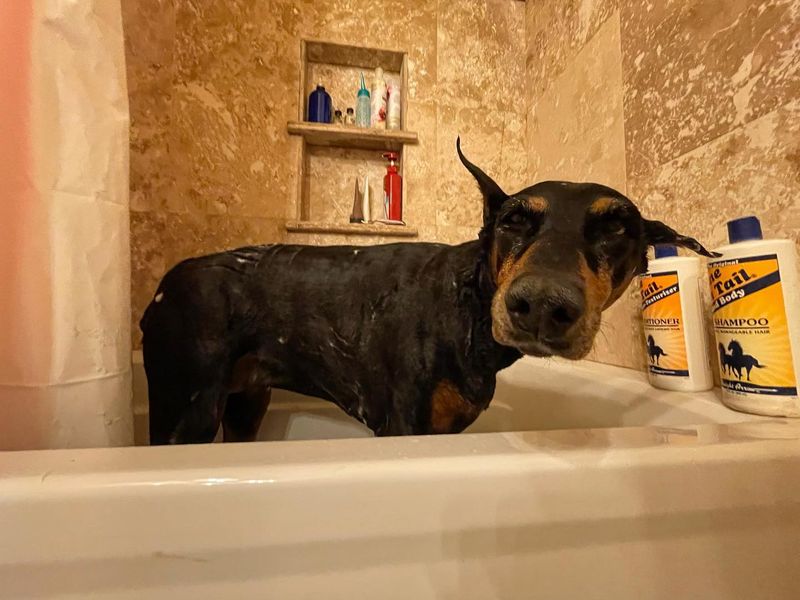
Dobermans sport short, sleek coats that shed moderately year-round. Weekly brushing with a rubber curry brush or grooming mitt removes loose hair and distributes natural oils for that characteristic shine.
Bath time shouldn’t be frequent – once every 1-2 months keeps their coat clean without stripping protective oils. Use gentle dog-specific shampoo and thoroughly rinse to prevent skin irritation.
Don’t forget those often-overlooked grooming needs: weekly nail trims prevent painful splitting and clicking on hard floors. Teeth brushing 2-3 times weekly with enzymatic canine toothpaste prevents dental disease. Starting these routines as puppies creates a dog who stands calmly for all grooming procedures throughout life.
9. Building Unshakable Confidence Through Exposure
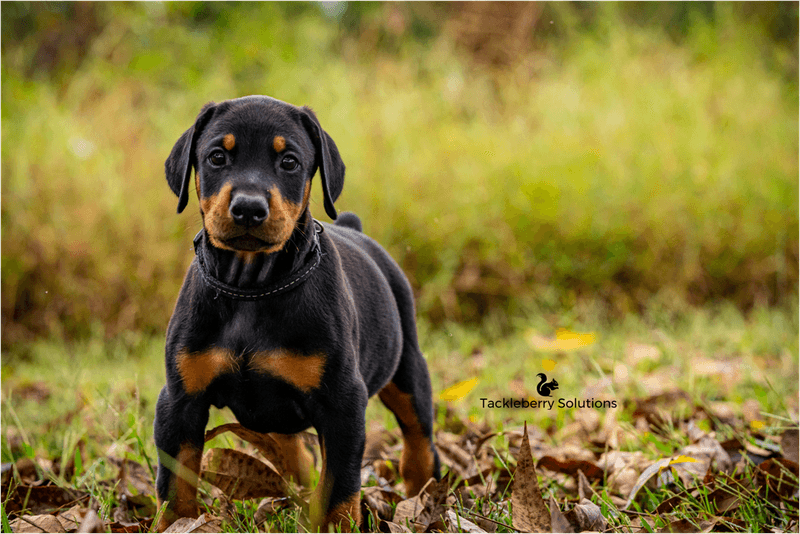
Confident Dobermans make better companions and guard dogs. Create positive experiences with potentially scary things – vacuum cleaners, thunderstorms, fireworks, and strangers. Use treats and play to build positive associations.
Avoid coddling during minor fears, which accidentally rewards nervous behavior. Instead, maintain a matter-of-fact attitude that communicates “nothing to worry about here.” Your puppy takes emotional cues from you!
Expose your Doberman to varied environments – urban settings, rural areas, different floor surfaces, and water. Each successful navigation builds confidence. Remember that socialization never truly ends – continue introducing new experiences throughout your dog’s life to maintain that bold Doberman temperament.
10. Establishing Clear Leadership Without Dominance
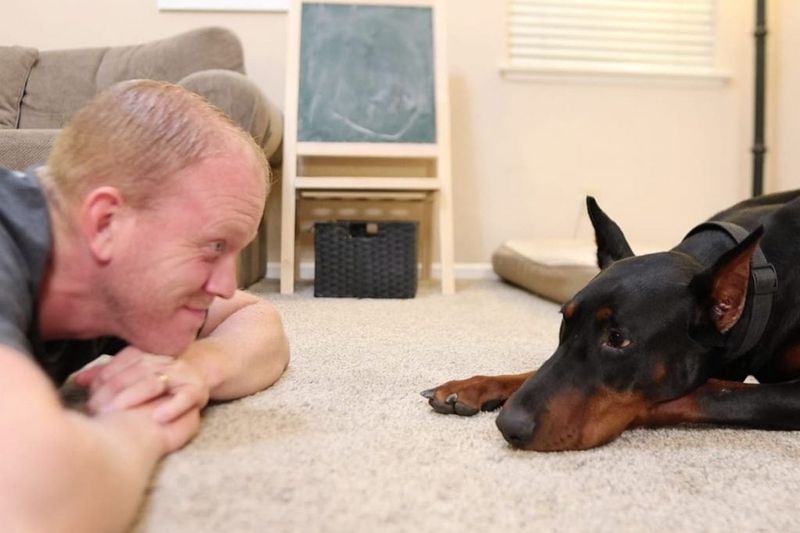
Dobermans respect leadership but respond poorly to harsh “alpha” methods. Establish yourself as a benevolent leader who provides structure, not intimidation. Consistent rules, enforced with calm confidence, create security for these pack-oriented dogs.
Require basic manners – sitting before meals, waiting at doors, and walking politely on leash. These daily reminders establish your role as decision-maker. Reward good choices lavishly with praise, treats, and play.
Avoid confrontational techniques like alpha rolls or physical corrections, which damage trust and can trigger defensive responses. Modern research shows that positive leadership creates stronger bonds and better behavior than dominance-based methods. Your Doberman wants to follow you – just show them how!
11. Managing The Infamous Doberman Velcro Dog Syndrome
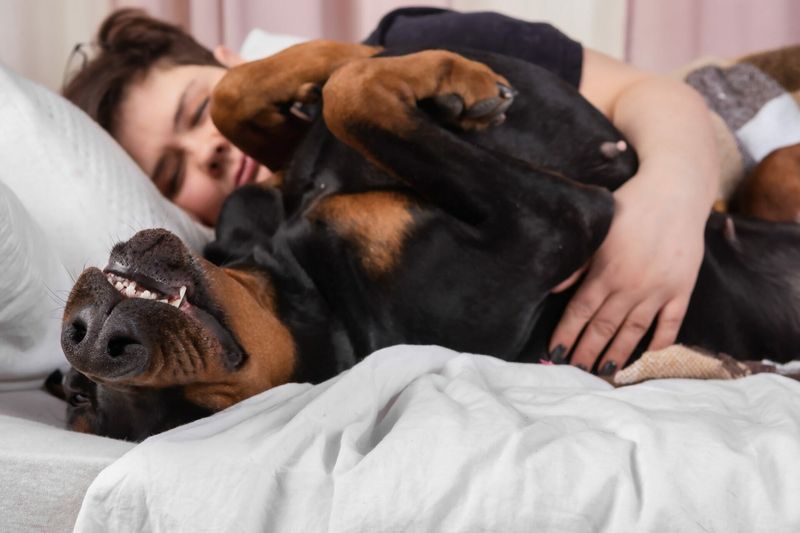
Dobermans bond intensely with their people, earning them the nickname “velcro dogs.” While this loyalty is endearing, preventing unhealthy attachment prevents separation anxiety later. Practice short departures from puppyhood, gradually increasing alone time.
Create positive associations with your absence – special toys or long-lasting treats appear only when you leave. Keep departures and returns low-key to avoid making them emotional events.
Crate training provides security during alone time. A tired Doberman settles more easily, so schedule exercise before departure. Some owners find that leaving talk radio playing provides comforting human voices. Balance affection with independence training for a confident adult who enjoys your company without falling apart when you’re gone.
12. Channeling Natural Protective Instincts Appropriately

Dobermans were bred to protect, but this instinct needs guidance to prevent inappropriate guarding behaviors. Teach your puppy that you control access to resources – food, toys, and territory. Practice trading items for treats to prevent resource guarding.
Socialize extensively so your Doberman learns who belongs in their circle of trust. Controlled introductions to visitors prevent territorial reactions. Never encourage aggressive displays, even if they seem cute in a puppy.
Consider advanced training like Canine Good Citizen certification to prove your Doberman’s public manners. Some owners pursue protection sports like Schutzhund that channel protective instincts into structured activities. A well-socialized Doberman naturally protects their family without needing to be taught aggression.
13. Handling The Mouthy Puppy Phase
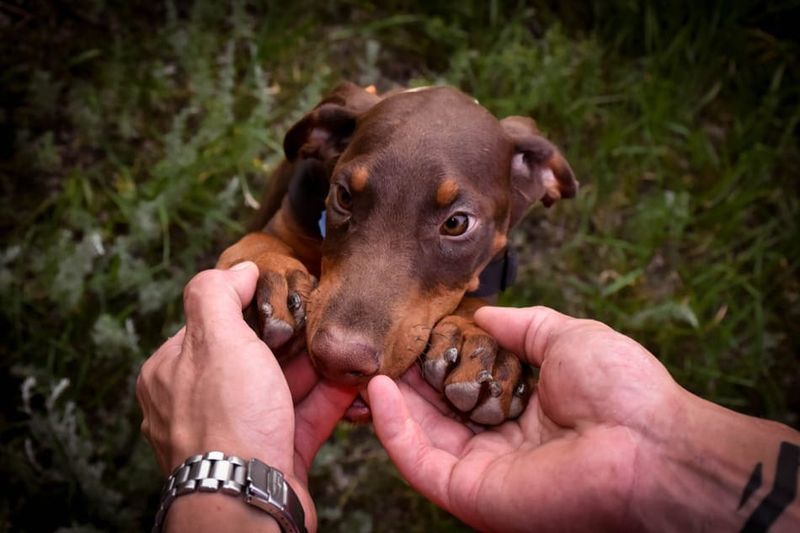
Doberman puppies explore their world mouth-first, which means human hands often become unintentional chew toys. Redirect biting to appropriate toys immediately – always have substitutes ready. A sharp “ouch!” followed by briefly stopping play teaches bite inhibition.
Frozen wet washcloths provide relief during teething around 3-6 months. Avoid rough wrestling games that encourage mouthing human body parts. Instead, play tug with rules: the game stops if teeth touch skin.
Consistency matters across all family members – everyone must follow the same rules about acceptable mouth behavior. With patience and proper redirection, your Doberman learns gentle mouth manners. This phase passes, but the habits you establish now last a lifetime.
14. Harnessing Their Working Dog Intelligence

Dobermans were designed as working dogs, and their sharp minds crave jobs. Basic obedience barely scratches the surface of their capabilities. Teach practical commands like “place” (go to bed), “leave it,” and reliable recall for safety and convenience.
Once foundations are solid, explore advanced training. Tricks like retrieving specific items by name provide mental stimulation. Many Dobermans excel in dog sports – agility, rally, tracking, and obedience competitions provide structured outlets for their working abilities.
Consider practical household jobs too. Dobermans can learn to bring in the newspaper, help with laundry, or find lost items. A Doberman with purpose is a happy, balanced companion who feels fulfilled rather than frustrated by their intelligence.
15. Navigating The Challenging Adolescent Phase
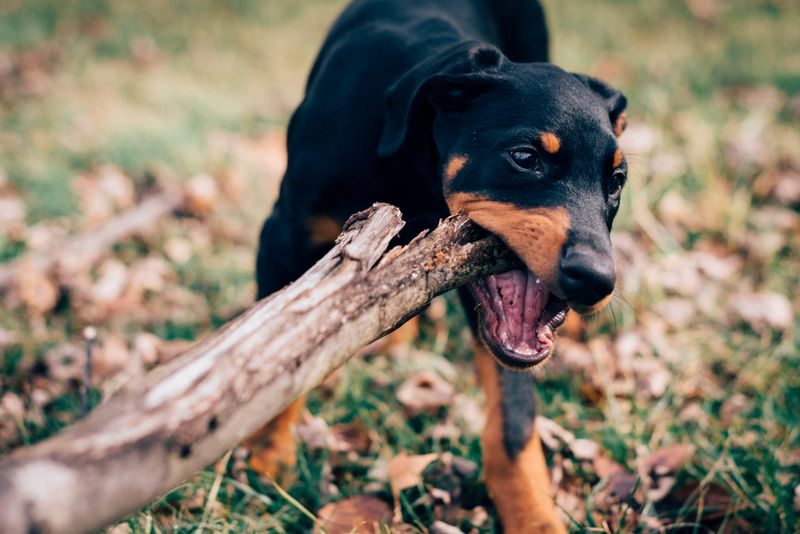
Around 6-18 months, your once-perfect puppy might seem to forget all training as adolescence hits. This developmental stage tests your patience but doesn’t reflect permanent regression. Maintain consistent expectations even when your teenage Doberman tests boundaries.
Hormonal changes may trigger new behaviors like marking, increased energy, or selective hearing. Reinforce basic training with high-value rewards during this challenging period. Consider refresher training classes specifically for adolescent dogs.
Exercise needs peak during this phase – channel that energy constructively. Remember that your Doberman isn’t being stubborn out of spite – their developing brain is reorganizing. Patience now yields dividends when your dog matures into the steadfast adult companion Dobermans are known to become.




